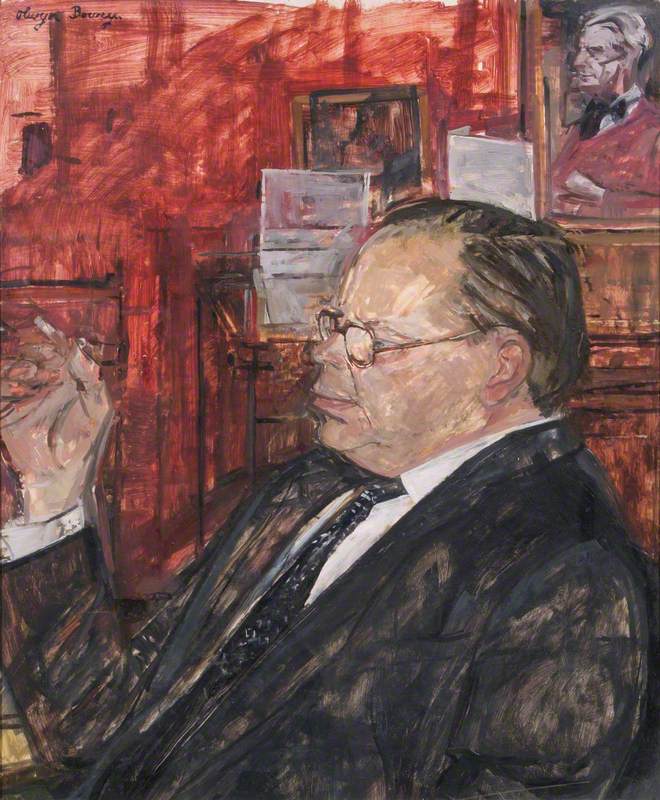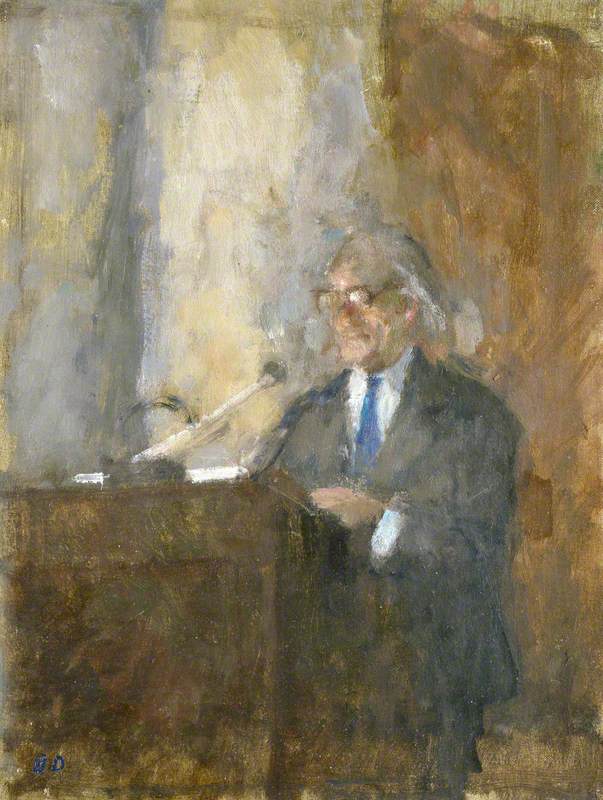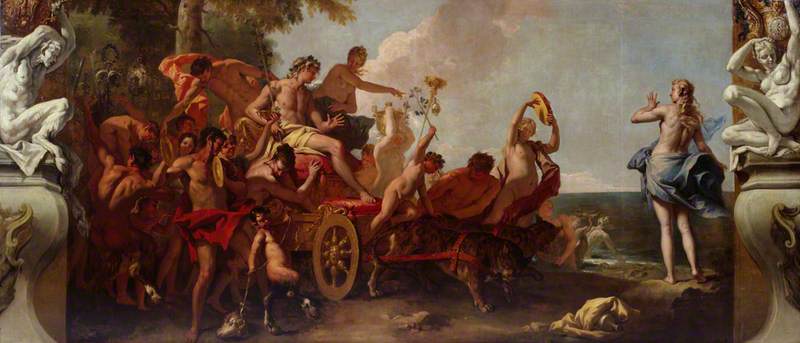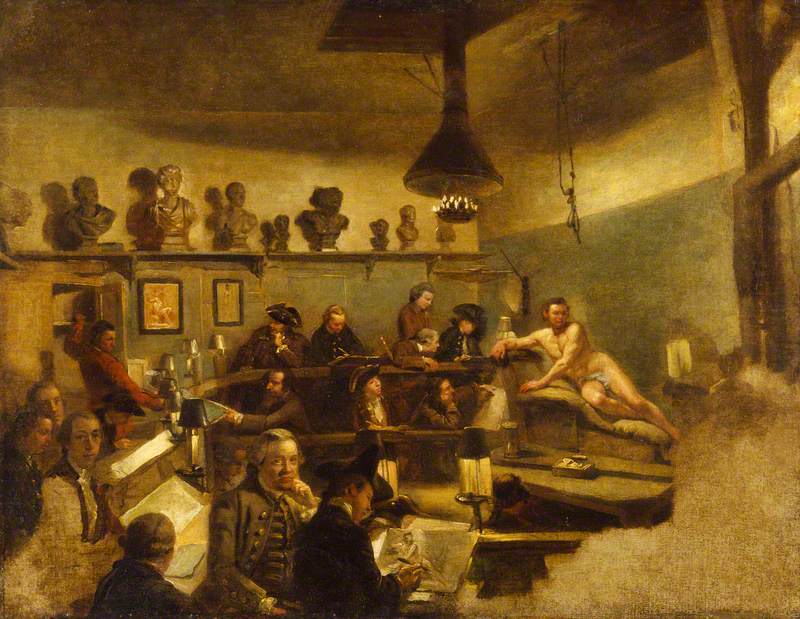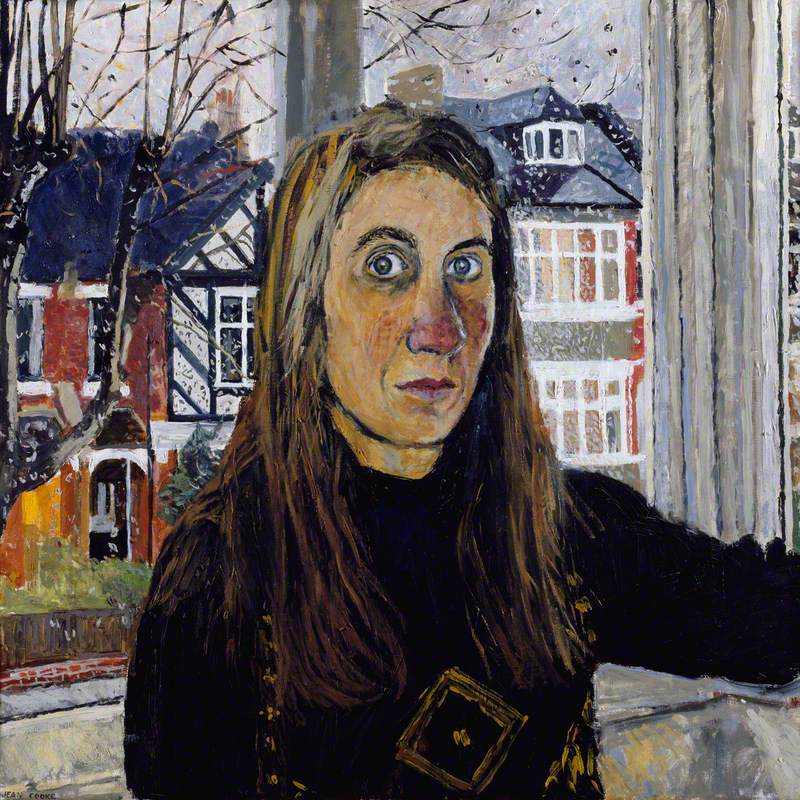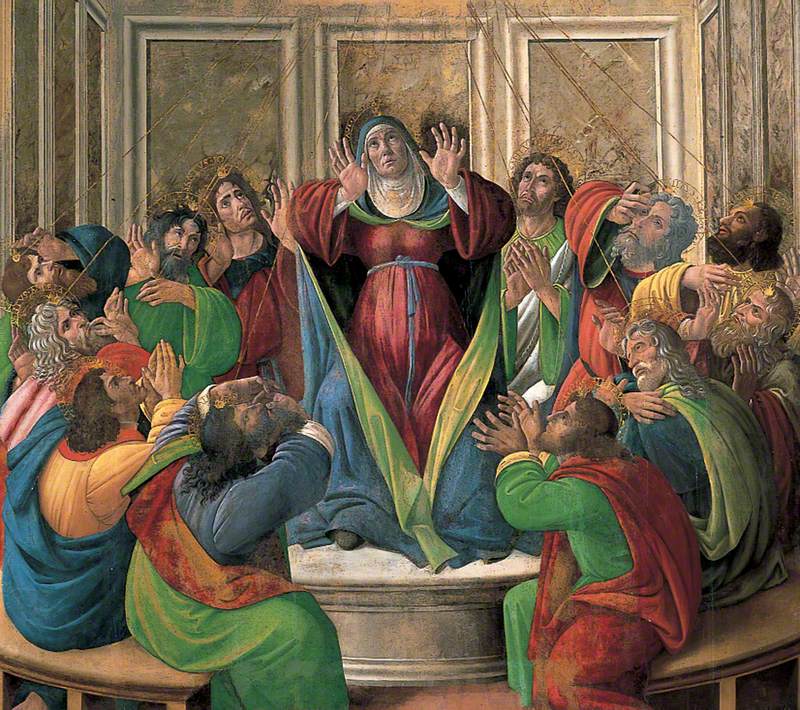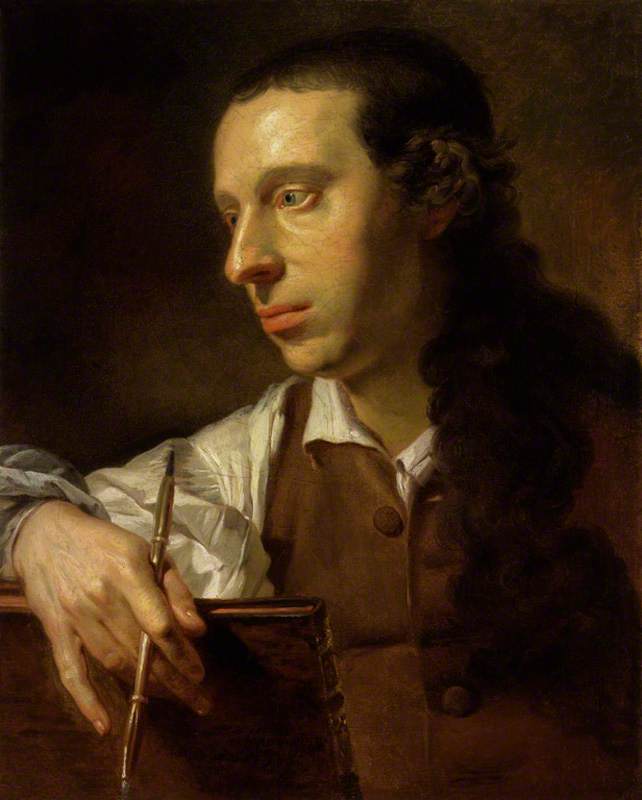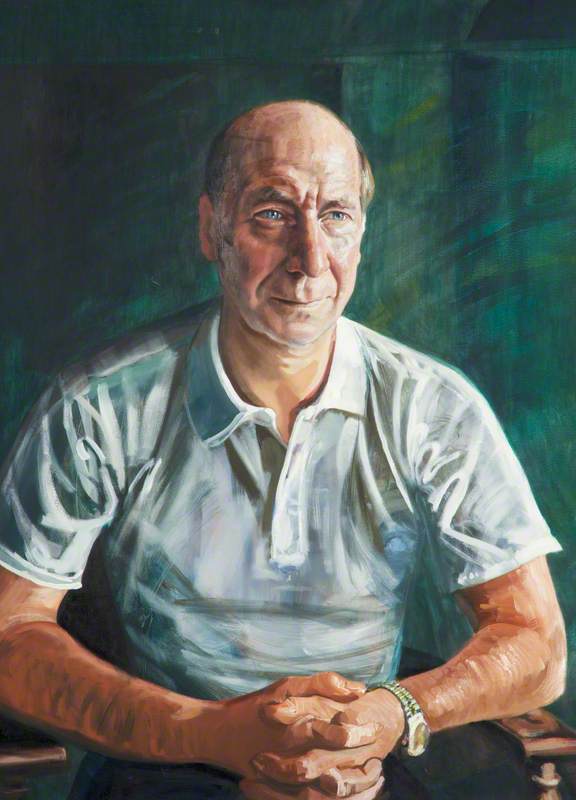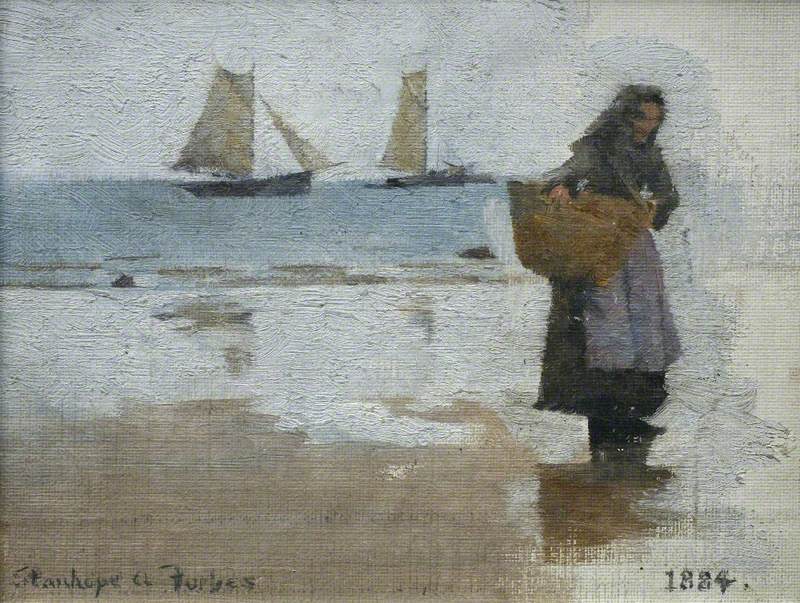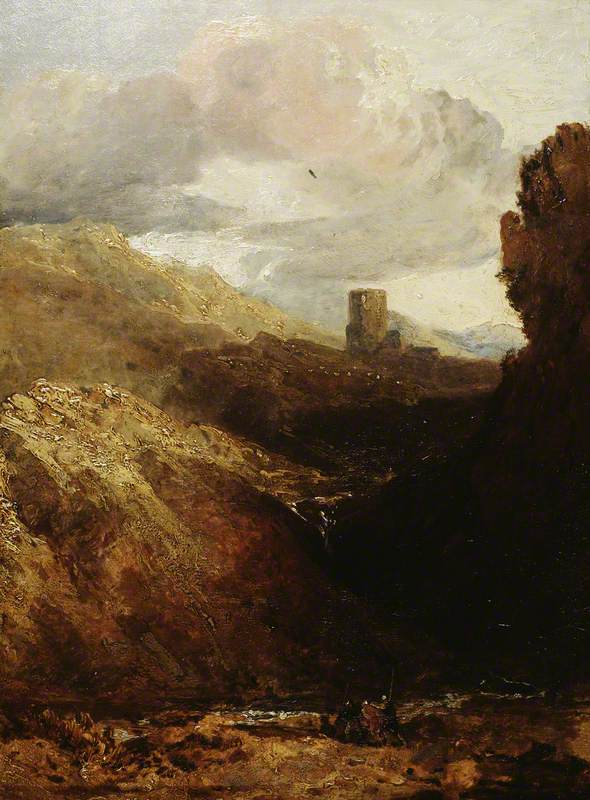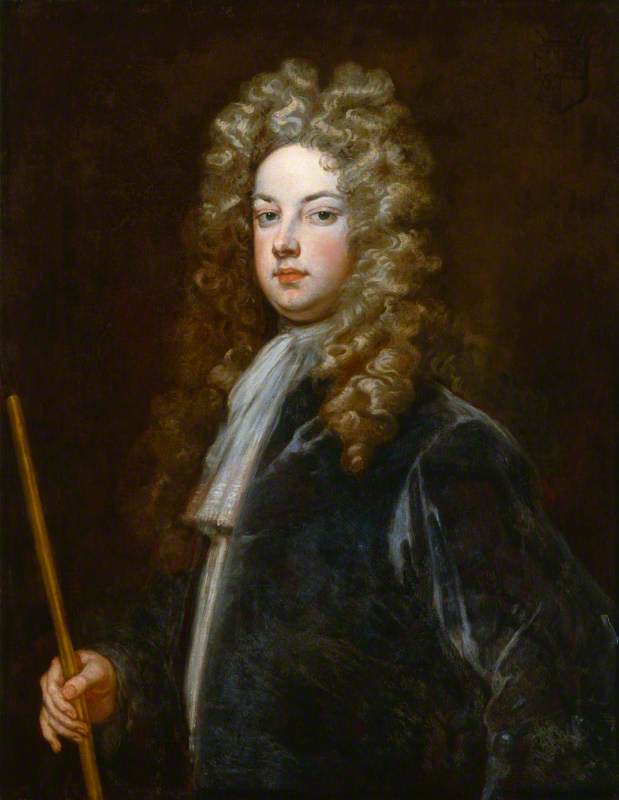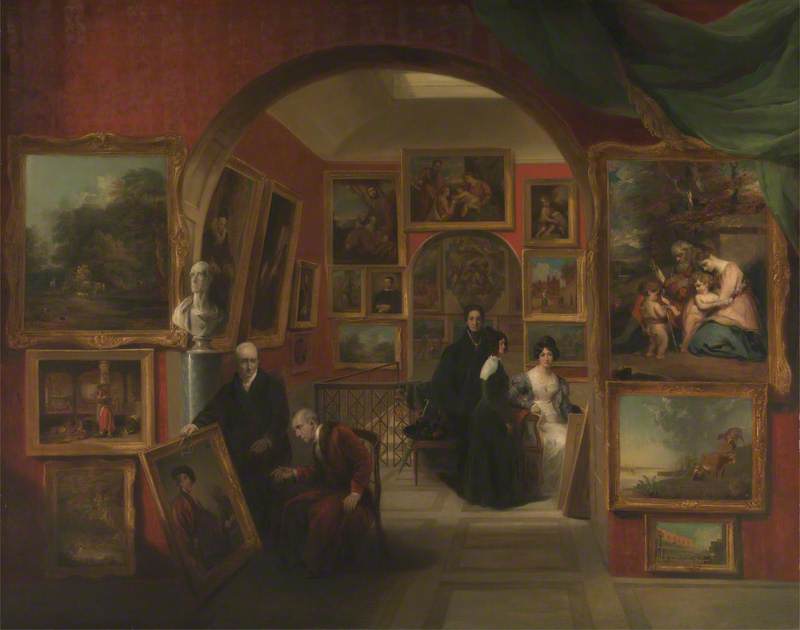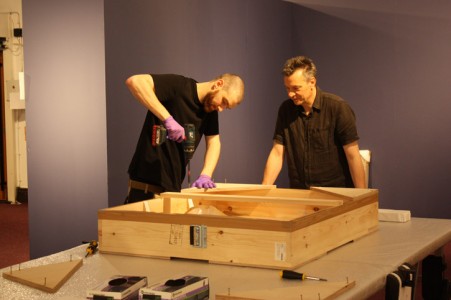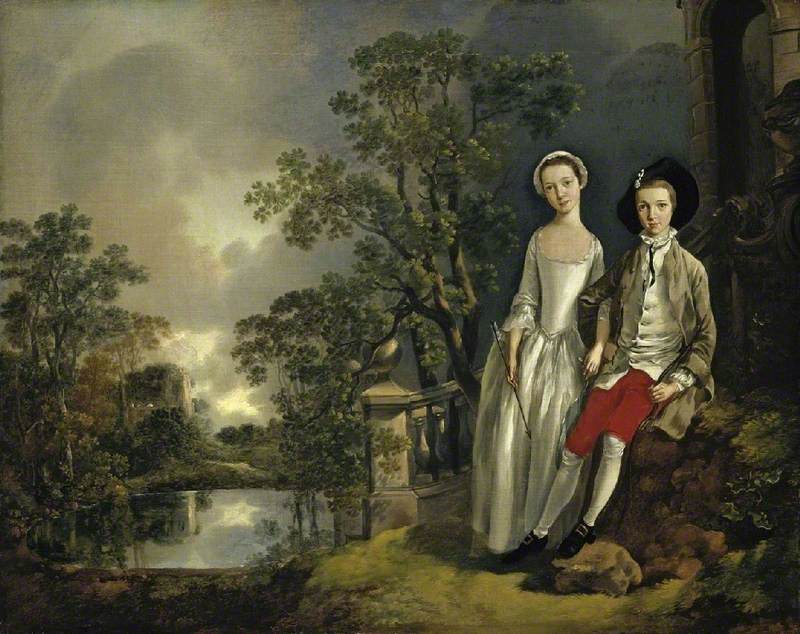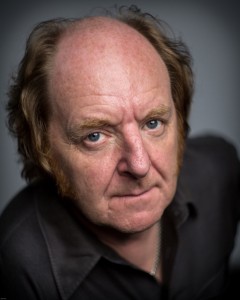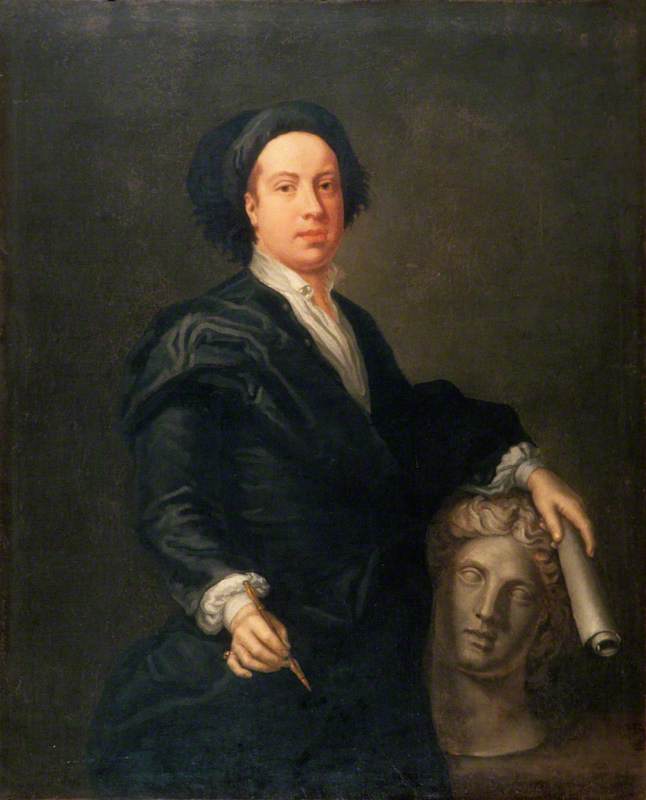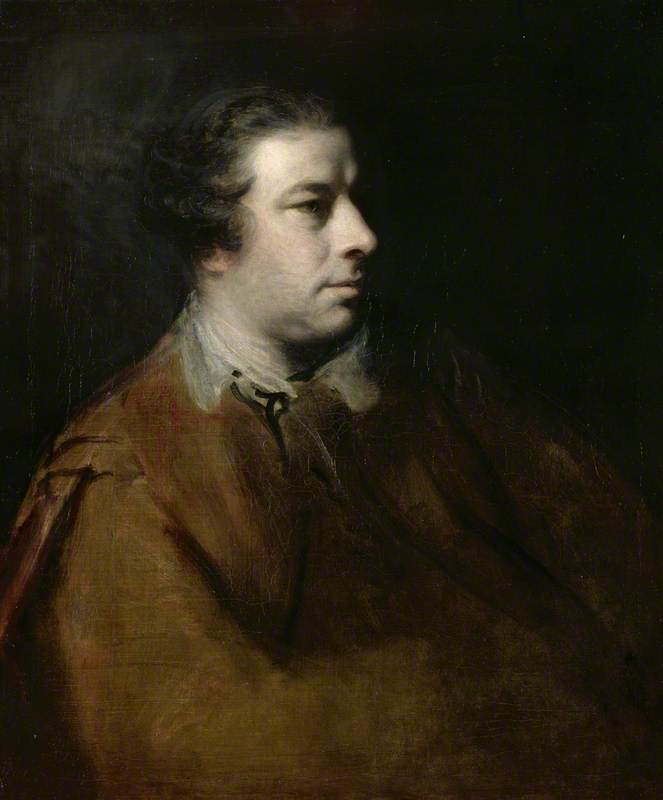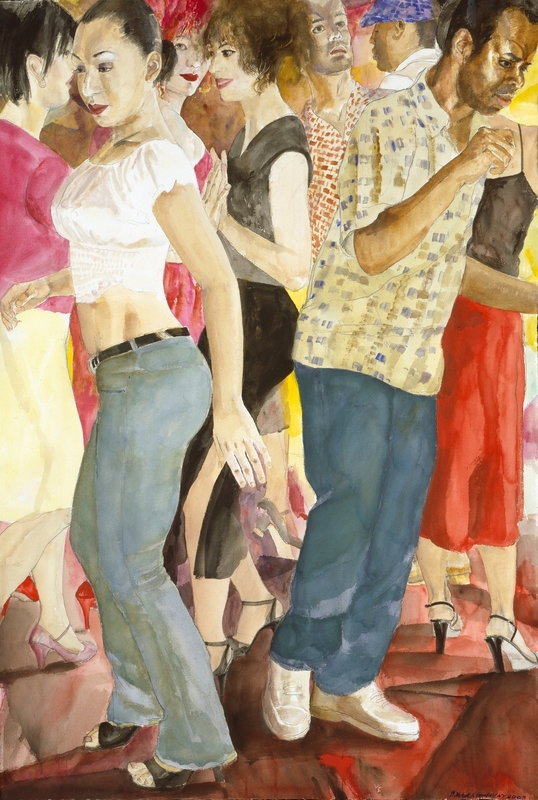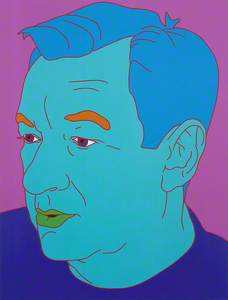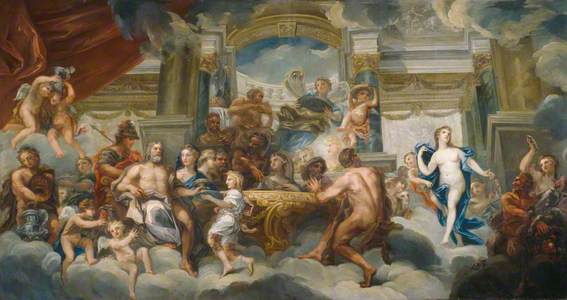The RA was established in 1768 by a group of artists led by the famed portraitist Joshua Reynolds. It's a privately funded institution led by artists and architects, and houses an art school. The collection focuses on British art and artists from the eighteenth century onwards. It contains almost 1,000 paintings including works by Gainsborough and Constable.
The Antique Room of the Royal Academy at New Somerset House
1780–1783
Johann Zoffany (1733–1810) (attributed to) 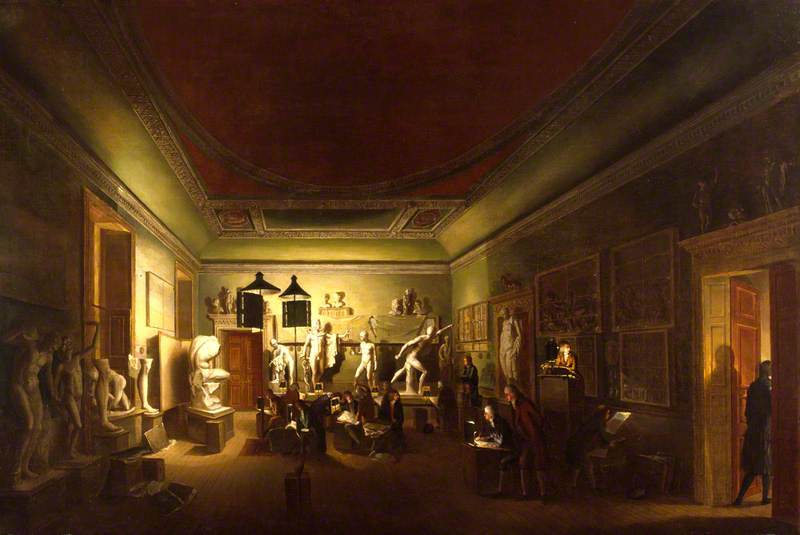
Charles Saumarez Smith, Secretary and Chief Executive of the RA from 2007 to 2018, shares his thoughts on some of the organisation's rarely seen works.
This scene is of Academicians having lunch during the build up to the Summer Exhibition. It was painted by Frederick Elwell – he's standing up at the front on the left.
The Royal Academy Selection and Hanging Committee, 1938
1938
Frederick William Elwell (1870–1958) 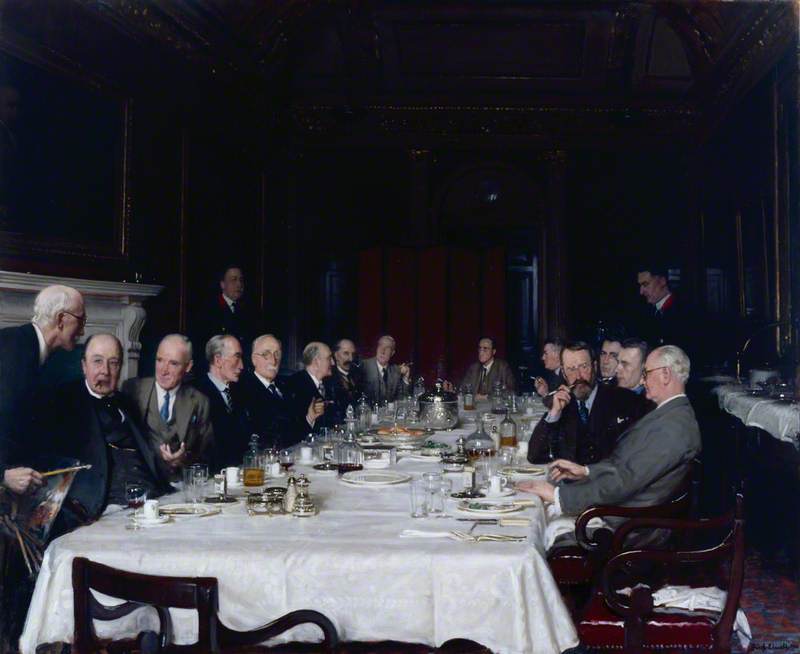
A lot of old men sit round the table with their cigarettes and cigars. It's a dim period in the Academy's history when it had turned itself into a private club. Nowadays lunch is quicker and much less formal. It concentrates on the problems of the exhibition's layout, but also includes a bit of RA gossip, which is why I always like this time of year.
Humphrey Brooke was one of my predecessors. He suffered from what was then known as 'manic depression' which he believed could only be cured by sex and smoking. This portrait shows a man of the establishment, contentedly enjoying a fag.
He came from a grand Yorkshire family, and was a so-called 'monuments man' during the Second World War, finding and saving works of art across Europe.
After the war, he worked in Austria where he met his wife, Nathalie. Brooke later joined the Tate Gallery, and then became Secretary of the RA in 1952.
This next picture reveals much about the RA during the high Victorian period.
The Council of the Royal Academy Selecting Pictures for the Exhibition, 1875
1876
Charles West Cope (1811–1890) 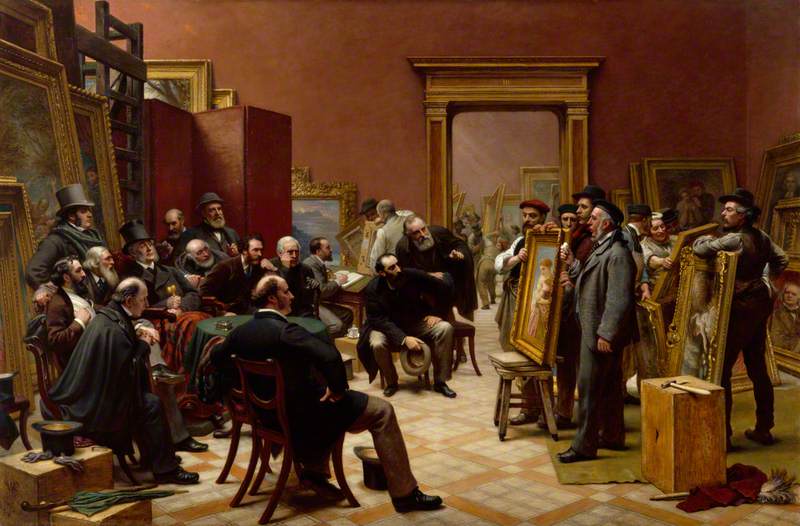
The president, in the group on the left, leans back in his chair, top-hatted, whiskered, supercilious and wrapped in a rug. At the front, artist John Everett Millais, one of the brightest stars of the period, has placed his top hat on the floor.
Academicians at this time were wealthy and sold their works to industrialists and the nouveau-riche. The whole scene exudes a sense of authority.
We had an exhibition about Hugh Casson in 2013 but I don't remember seeing this portrait.
The portrait shows him little and neat, eyes glinting behind his glasses. I regret never having met him as his memory still lives so strongly at the RA. He was the president who revived its fortunes in the late 1970s, not least by founding the Friends of the Royal Academy in 1977. Bernard Dunstan, who painted this portrait, became a member of the Academy in 1968, and when he died in 2017 was the longest serving Academician.
I remember one of the Academicians once saying how delighted he was that portraits had been eradicated from the Summer Exhibition. Michael Craig-Martin gave a self portrait as his diploma work when he was elected to the RA in 2007.
I like the fact that it's a self portrait. Craig-Martin is characteristically going against the trend. I admire his intellectual rigour and independence of mind, so this inclusion is an unashamed tribute.
I've chosen this next work in honour of the Victoria and Albert Museum's William Kent exhibition.
It should be on the ceiling of the RA saloon, but it's currently in storage as we don't currently have the funds to reinstate it.
Kent was an affable and genial man who lived for a while in Burlington House (now home to the RA). However, I don't think anyone would pretend he was a great painter. It's a curiously unsatisfactory piece – rather awkward and trying too hard. But it deserves to be reinstated as part of a historically important, decorative ensemble.
Almost every day I sit in meetings underneath this often-missed great work of art by Sebastiano Ricci.
He was one of a number of decorative painters who came to England from the continent in search of lucrative country house commissions. Ricci was hired by Richard Boyle, third Earl of Burlington, to undertake a series of paintings for a house on Piccadilly, in London. If one looks at it carefully, one can see why Ricci was popular. It's got a certain swish and swagger which is extremely attractive.
The St Martin's Lane Academy was the most important in London before the RA was founded.
It was based in a courtyard off St Martin's Lane, near Covent Garden, and ran drop-in evening classes in drawing. It was more accessible and cheaper to join than the RA. The person at the front looking out is George Michael Moser, who later became the first Keeper of the RA. John Malin, the first member of staff of the RA, is in the background putting equipment in a cupboard.
When I first arrived at the Royal Academy, Jean Cooke dominated the general assembly's meetings. Extremely small, she had a squeaky voice and whatever she said was treated with awe.
She lived in a cold cottage in Birling Gap, East Sussex, once drove a Morgan and had been married to artist John Bratby. The title of this work is taken from Fleurs du mal, Baudelaire's collection of poems, and translates as 'and never do I cry and never do I laugh'.
Charles Saumarez Smith, Secretary and Chief Executive, Royal Academy of Arts from 2007 to 2018
Editor's note: This story first appeared on the BBC Arts website
